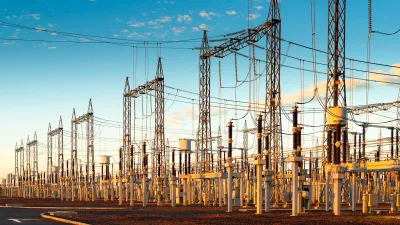Emerging technologies like AI have great promise for climate innovation, but also a hidden environmental footprint could lead to disproportionate harm to low-income and marginalized communities.

A research article from the Brookings Institution calls attention to the growing environmental impacts of artificial intelligence (AI) and its impact on climate-related racial disparities. Data from the Fifth National Climate Assessment reveal that the U.S. is warming faster than the rest of the world from human-induced climate change and showed that climate impacts have unequal burdens that fall most heavily on communities of color and low-income communities, according to researchers Joseph B Keller, Manann Donoghow, and Andre M. Perry.
“[T]o effectively address these harms and lay a strong foundation for climate and environmental justice, policymakers must acknowledge and confront the growing environmental impacts of an emerging technology: artificial intelligence (AI),” they write. The Keller et. al liken the industrial shift AI is propelling to the advent of previous technologies that unequally distributed societal benefits, as well as point to AI’s growing but often hidden footprint. While technology is often considered “cleaner” than processes and equipment that rely on fossil fuels, they still require extensive amounts of energy and water to function. The article cites research that suggests a single ChatGPT query consumes four to five times more energy than a typical search engine request, and image-generating tasks even more. These energy and resource demands will only increase as the technology’s adoption becomes more widespread.
The Brookings researchers acknowledge that AI, adopted in a conscientious manner, will be an key part of the climate solution in the U.S., but say it is vital to first improve transparency around the technology’s environmental impacts and adopt considerations for its environmental impacts in order to prevent the perpetuation of environmental injustice. “By centering justice, we can mold a more transformative and sustainable climate policy designed for an emerging digital future,” Keller et al. write. “The U.S. stands on the brink of a tremendous opportunity to collaborate with major actors in the AI industry and improve transparency around the technology’s environmental impacts. Subsequent climate assessments must incorporate considerations for AI’s environmental footprint—a crucial step in preventing disproportionate harm in the most vulnerable communities,” the authors write.
FULL STORY: The US must balance climate justice challenges in the era of artificial intelligence

Alabama: Trump Terminates Settlements for Black Communities Harmed By Raw Sewage
Trump deemed the landmark civil rights agreement “illegal DEI and environmental justice policy.”

Study: Maui’s Plan to Convert Vacation Rentals to Long-Term Housing Could Cause Nearly $1 Billion Economic Loss
The plan would reduce visitor accommodation by 25% resulting in 1,900 jobs lost.

Planetizen Federal Action Tracker
A weekly monitor of how Trump’s orders and actions are impacting planners and planning in America.

Baltimore Ordered to Improve Sidewalk Accessibility
The city is one of many to face lawsuits for failing to comply with the Americans with Disabilities Act.

This Toronto Suburb Has More Bus Riders Than Columbus, Ohio
Brampton, Ontario used gradual improvements in service to prove that if you build it, they will ride.

Paris Bike Boom Leads to Steep Drop in Air Pollution
The French city’s air quality has improved dramatically in the past 20 years, coinciding with a growth in cycling.
Urban Design for Planners 1: Software Tools
This six-course series explores essential urban design concepts using open source software and equips planners with the tools they need to participate fully in the urban design process.
Planning for Universal Design
Learn the tools for implementing Universal Design in planning regulations.
Smith Gee Studio
Alamo Area Metropolitan Planning Organization
City of Santa Clarita
Institute for Housing and Urban Development Studies (IHS)
City of Grandview
Harvard GSD Executive Education
Toledo-Lucas County Plan Commissions
Salt Lake City
NYU Wagner Graduate School of Public Service





























